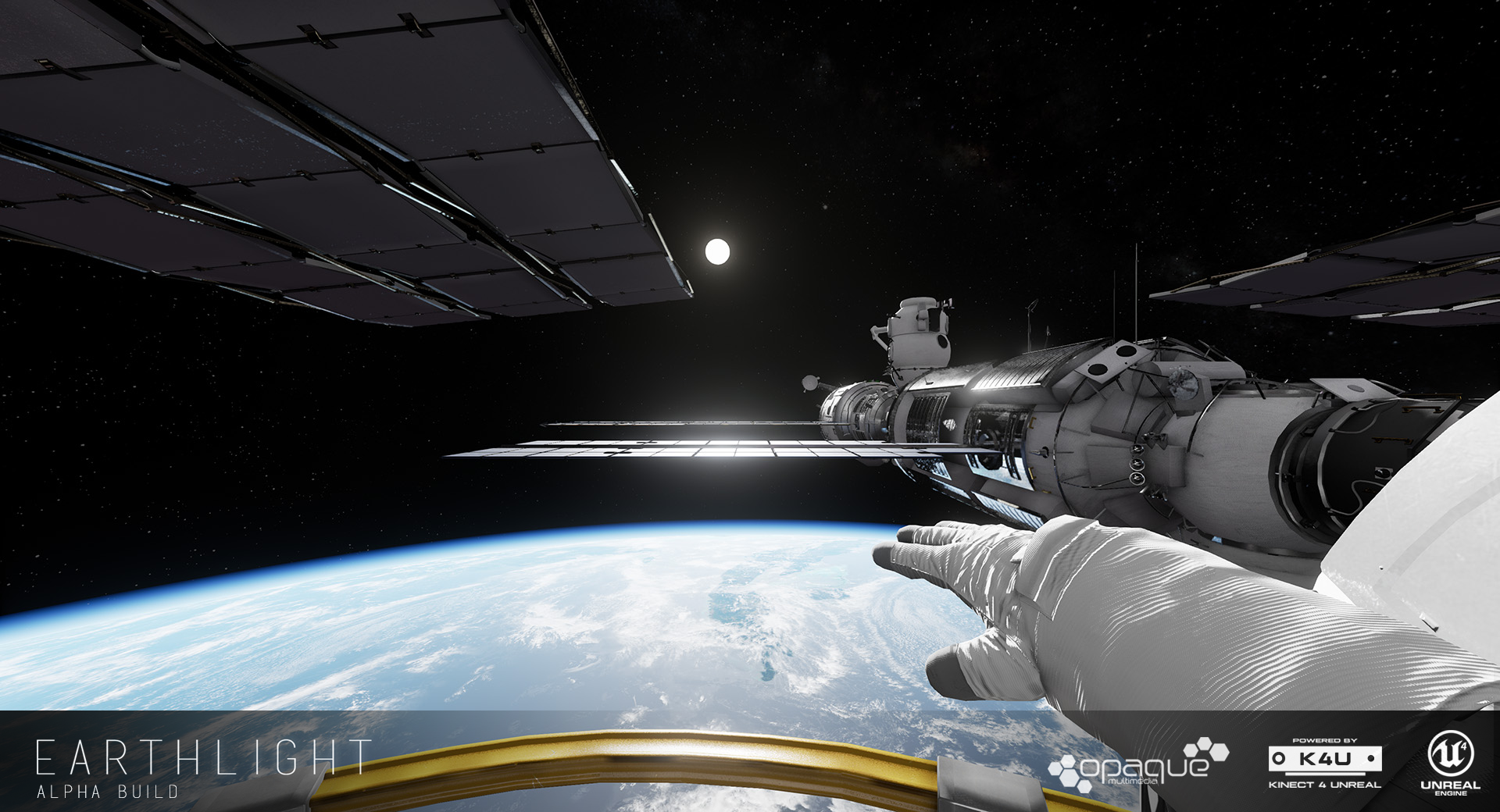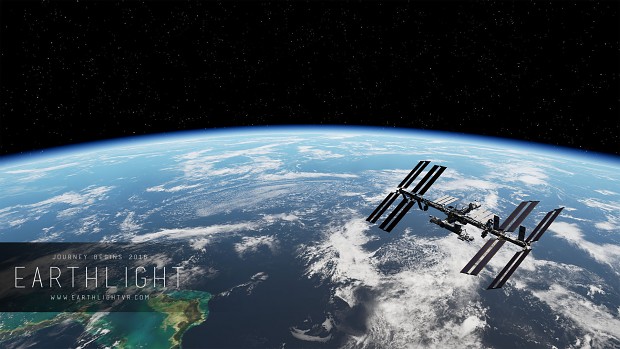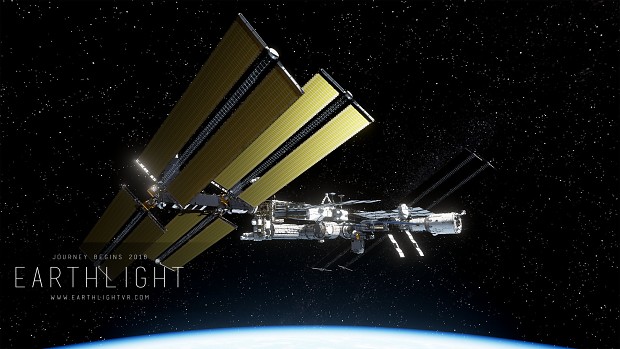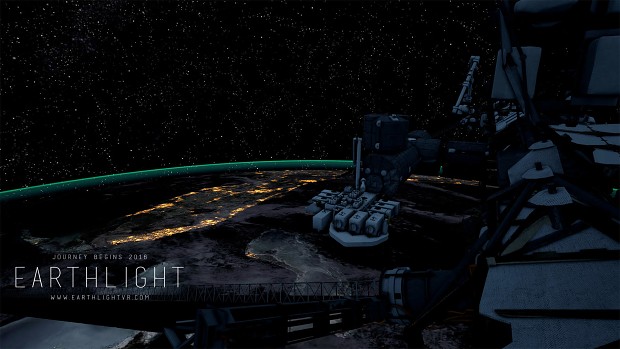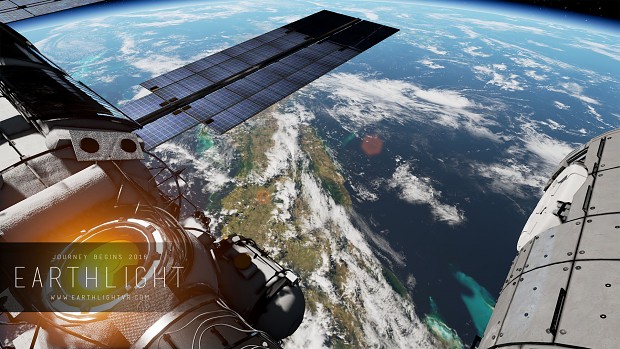At the inaugural Rooster Teeth Expo Australia convention in January, Earthlight project director Norman Wang talked to us about his desire to see a new kind of storytelling arise from VR. It's something that Earthlight - a VR game in which you play as an astronaut newly arriving at the International Space Station - is itself exploring. And it all begins with a handshake.
"That's something that NASA want to see," Wang tells us. NASA is collaborating in the development of Earthlight to help create as authentic an experience as possible. But that authenticity extends beyond the technical accuracy of life in space to the human interactions that result.
"For them [NASA], space is multinational," Wang continues. "None of this is possible without this multinational collaboration. The reason why we look so much at tacticity [with the HTC Vive controllers] is because we want you, the player, to shake hands, when you go up there for the first time, visiting the International Space Station. The crew is there, they open the door and greet you, and you shake hands."
This is just a small example of a new kind of experiential narrative that is only possible with VR's total immersion and control feedback. "The ability to go out there and shake the hands of the Russian cosmonauts up there, it's kind of a big deal," says Wang. "That tacticity - being able to reach out with your hand and shake someone's hand, rather than 'Press A To Pay Respects', that's the kind of storytelling that can only happen in VR."
It's not just player action that contributes to an experiential narrative. By observing the autonomous actions of the character you inhabit, you learn more about who that person is by simply witnessing things from their perspective.
"We have a central character - a clearly envisioned character," Wang explains. "You are playing as Anna. This is her background, this is her story, this is her training, this is who she is. The way she acts is entirely in keeping with that. Because you can look down and see your own hands in VR, you see your fingernails - does she paint her fingernails? What are the objects in her room? If she's sitting at a desk, does she scribble in the notepad? All these things can communicate.
"The ability to go out there and shake the hands of the Russian cosmonauts up there, it's kind of a big deal."
"It doesn't make a huge amount of sense unless you're in that perspective. Who cares about what's on her desk? But when you're sitting there going through a training brief and you can see the objects on the table, and you can see her writing down the notes or scribbling on the page because she's bored - that communicates who you are."
By combining this kind of subtle, immersive storytelling with an intense focus on creating an authentic astronaut experience, Earthlight uniquely values the broad objective of sending its players into space just as much as the small, moment-to-moment interactions that occur within that context of multinational human achievement. "When we say Earthlight is a game, it is definitely a game - it has a progression," says Wang. "But if we were to strip out the dialogue, then suddenly they [NASA] have a usable training simulation that doesn't require astronauts to be submerged underwater. Virtual reality is never going to replace that training, but it'll make it cheaper.
But will virtual reality catch on as a consumer experience? Just how many people are going to get to visit the ISS and shake hands with the cosmonauts on board? Wang has high hopes.
"Does she paint her fingernails? What are the objects in her room? If she's sitting at a desk, does she scribble in the notepad? All these things can communicate."
"We have almost 40 years of VR history, and people from JPL [NASA's Jet Propulsion Laboratory] have said that this generation of VR tech is the best they've ever seen," he continues. "That includes their internal efforts. If people are willing to put up with clunky, unreliable hardware to experience virtual reality, it's because they really see the value in that. I think this new generation, even if it doesn't find widespread consumer success - especially with the new pricing, which is a bit unfortunate - I think most industries wouldn't care about that."
In the future, this may not be an issue, as Wang sees 'bring your own device' becoming a more practical way of experiencing VR, though it will require phones which have VR support built into their actual chips. "And then it becomes ubiquitous to have a portal VR headset that you can slot your phone in," he envisions. "Or maybe the headphone is that virtual reality device? I think those things are definitely possible, and whether the consumer takes to that is really hard to say."
Such powerful tech that fits in your pocket is still a pipedream. Until then, if we want VR and the new forms of storytelling it brings to grow, we'll have to be content with one small step for man - or rather, one small handshake - at a time.
